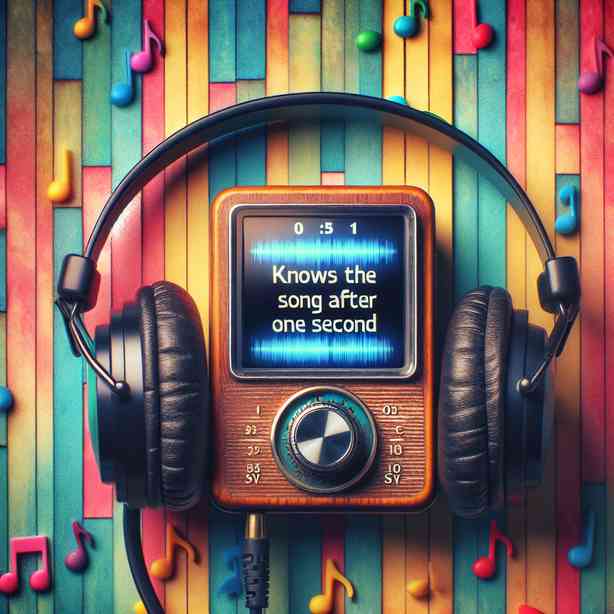
In our fast-paced world, music has become an indispensable part of our daily lives, often serving as a source of joy, comfort, and connection. The phenomenon of recognizing a song within just a second of hearing its melody or lyric has fascinated both listeners and researchers alike. This incredible ability, commonly referred to as “instant song recognition,” is not only a testament to our brain’s remarkable processing abilities but also reflects the profound impact music has on our emotions and memories.
To understand how we can identify a song almost instantaneously, we should first delve into the cognitive mechanisms involved in music recognition. When a listener hears a snippet of a song, their brain engages in rapid pattern recognition. The auditory cortex processes the sound waves, allowing for a quick comparison between the incoming audio and stored memories of previously heard songs. This process relies on several cognitive functions, including memory retrieval and pattern matching, which work together seamlessly to evoke the title and artist of the song.
Interestingly, many factors influence our ability to recognize a song quickly. One primary element is familiarity. The more often we listen to a particular tune, the stronger the neural connections in our brain become regarding that song. This familiarity can stem from various sources, such as personal experiences, cultural exposure, or even popular media. For instance, songs featured in movies or television shows often become ingrained in our memory, helping us to recognize them even after just a brief sample. Our emotional connection to certain songs also plays a critical role; the stronger the emotional experience associated with the song, the more likely we are to remember it.
Moreover, the genre and structure of the music can significantly impact how quickly we can identify a song. Songs with catchy hooks or distinctive melodies are generally easier to recognize. For instance, pop music is often designed to be memorable, incorporating repetitive choruses and familiar chord progressions that make instant recognition more likely. In contrast, more complex musical styles, such as jazz or classical music, may require a more extended listening period for recognition, as they often lack the immediate catchiness found in pop tracks.
Beyond individual differences in song recognition, cultural factors can also shape our musical preferences and listening habits. Across different regions and communities, certain songs may hold particular significance or popularity, allowing individuals from those groups to recognize them almost instantly. This cultural resonance can create shared musical experiences, further enhancing our ability to identify songs within seconds.
The technological advancements of the digital age have also revolutionized the way we experience music. With the advent of music streaming services and smartphone applications, listeners are now more exposed to a vast array of songs than ever before. Apps like Shazam and SoundHound have enhanced our ability to identify songs quickly and accurately, using sophisticated algorithms to analyze audio frequencies and match them against vast databases of music. This convenience has also influenced our expectations as listeners, making us accustomed to instant gratification in music recognition.
While the rapid identification of songs can be seen as entertaining, it also holds deeper implications for our understanding of human cognition and emotional processing. Music has a unique capacity to evoke memories and emotions, often leading us to reminisce about specific moments in our lives. Recognizing a song within seconds can trigger vivid recollections of past experiences, enhancing our emotional responses to music. This connection underscores the profound relationship between music and memory, revealing how deeply intertwined our feelings of nostalgia, joy, or even sadness can be with the melodies we love.
As we continue to explore the boundaries of music recognition, scientists are also interested in how this phenomenon may play a role in therapeutic settings. Music therapy has gained recognition for its potential benefits in various mental health conditions, including anxiety and depression. The ability to recognize and connect with familiar songs can serve as a powerful tool in encouraging communication and emotional expression, making it particularly useful for individuals who may struggle with verbal communication.
In conclusion, the ability to recognize a song within just one second showcases the remarkable interplay between our cognitive abilities and emotional experiences. As music continues to shape our lives, the phenomena of instant song recognition serves as a fascinating reminder of our unique connection to melodies and rhythms. Whether it’s through casual listening, active engagement, or the use of technology, music remains a powerful medium that not only entertains us but also enriches our memories and emotions. The excitement of knowing a song as soon as it begins sparks joy and nostalgia, creating a shared experience that resonates within us all.


